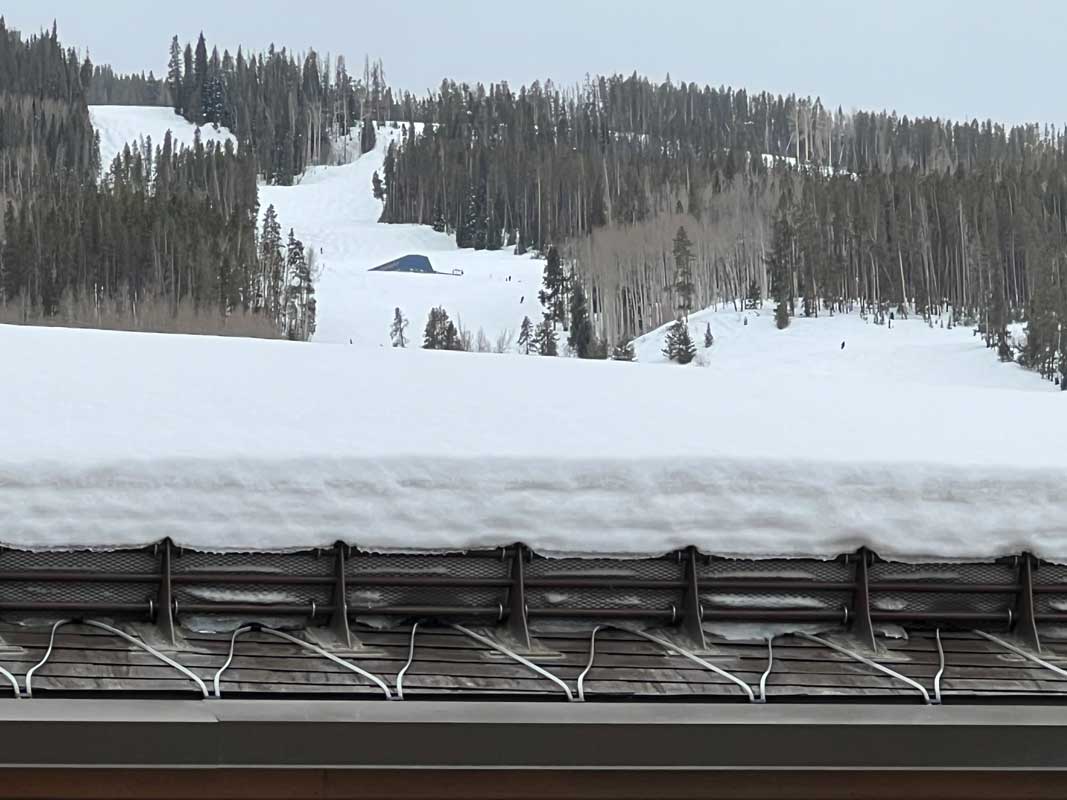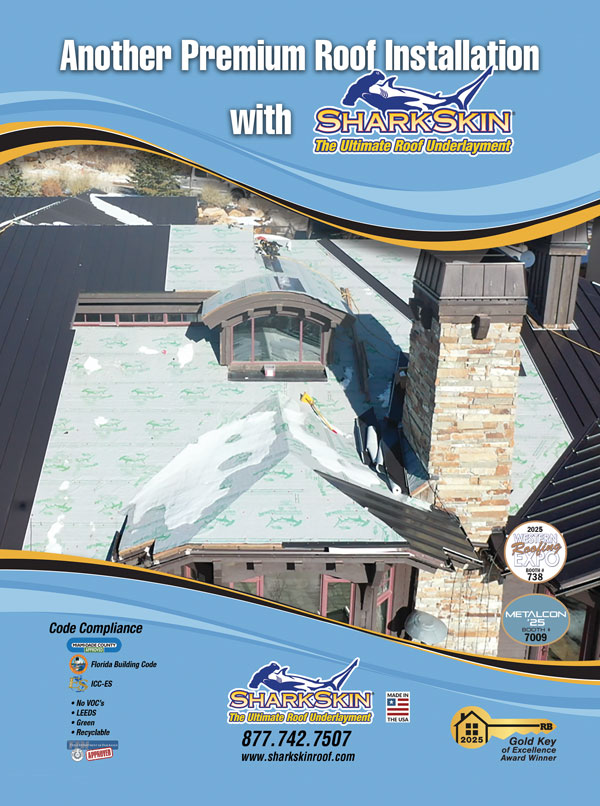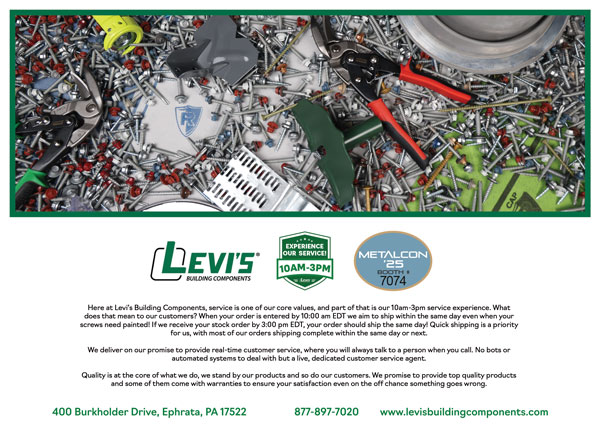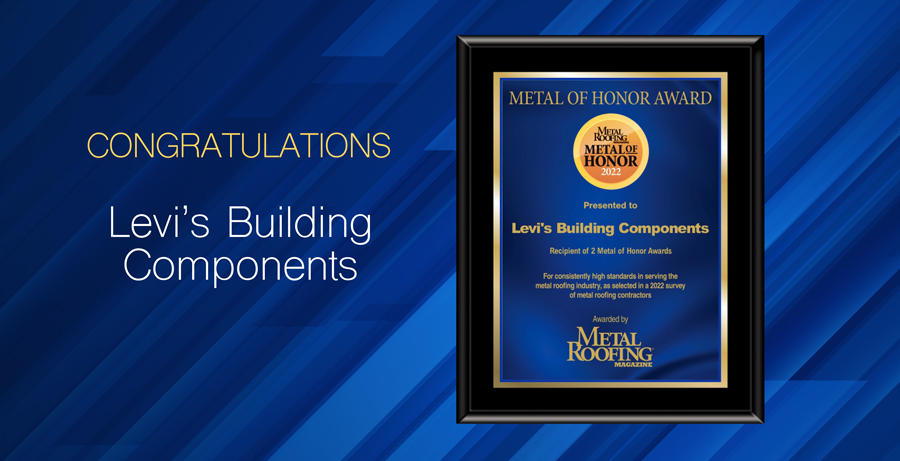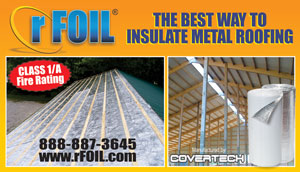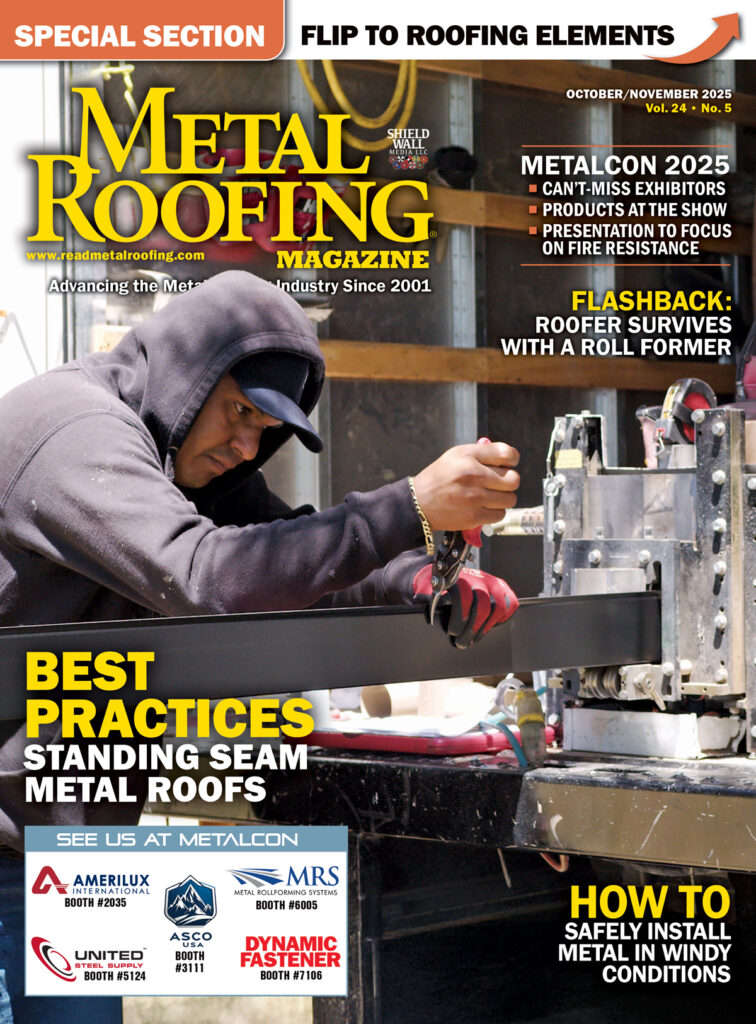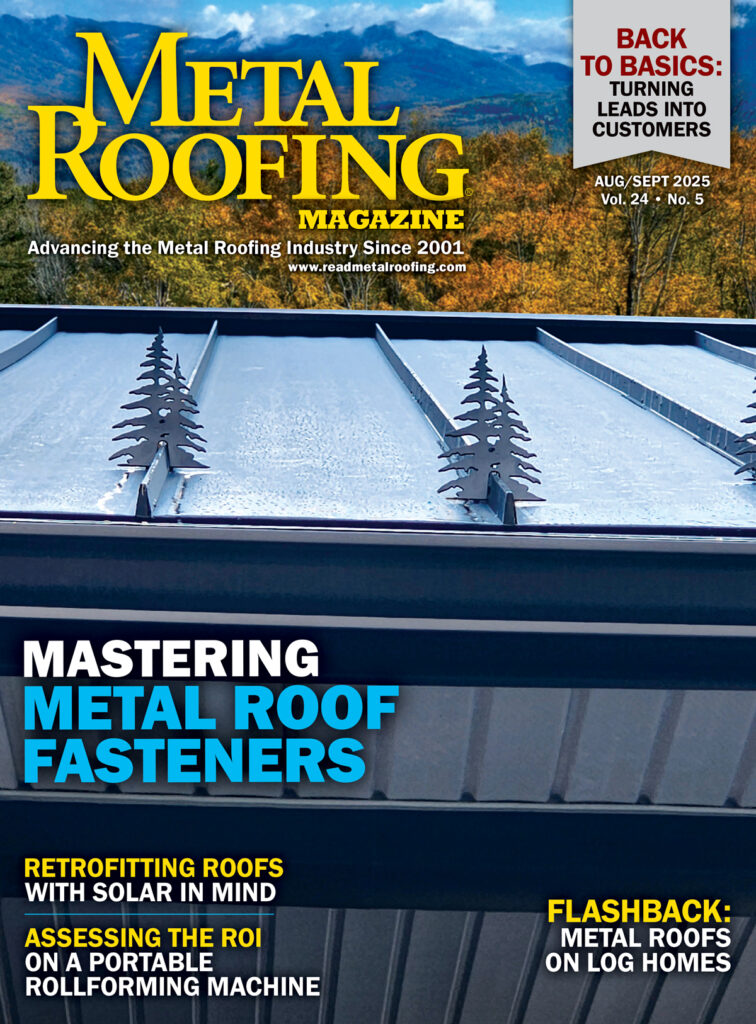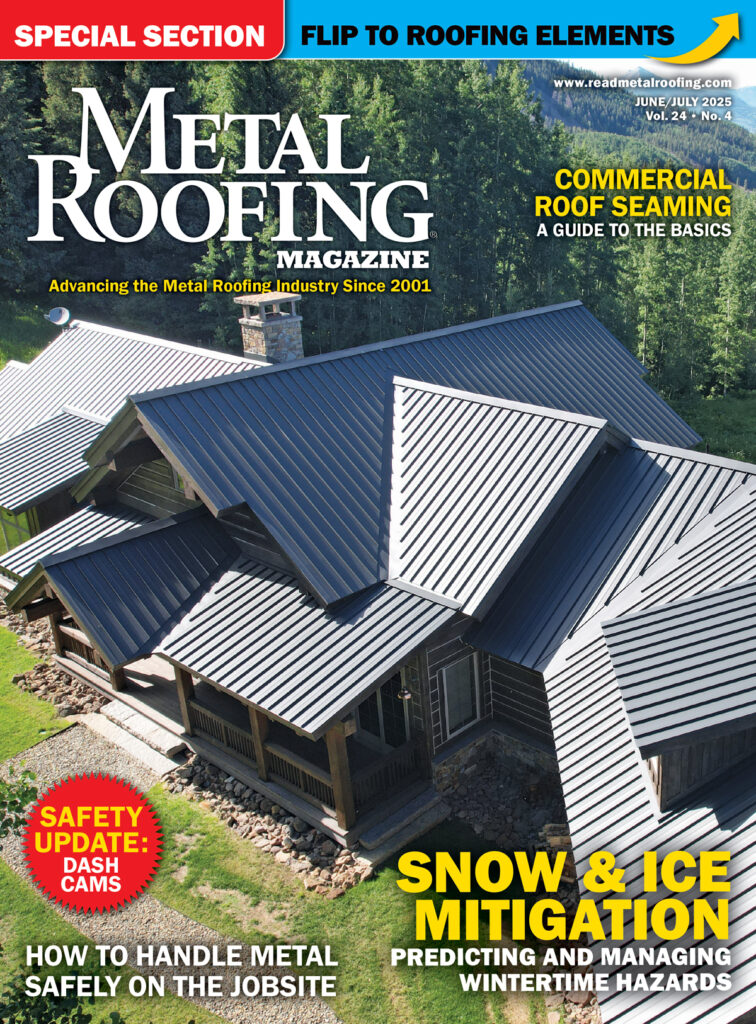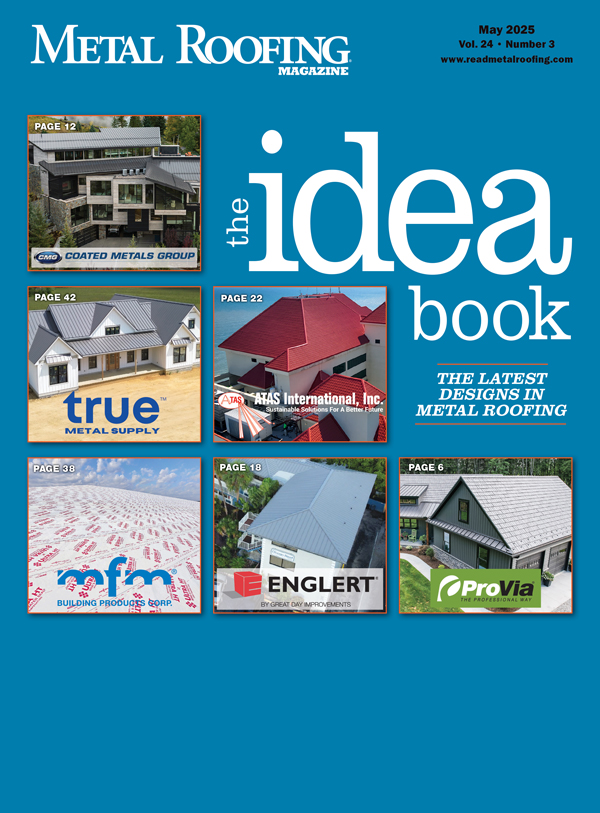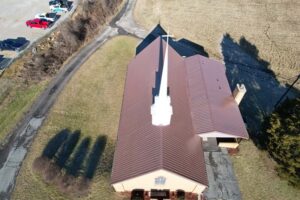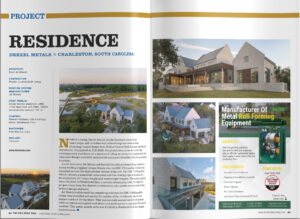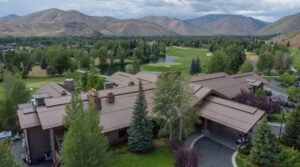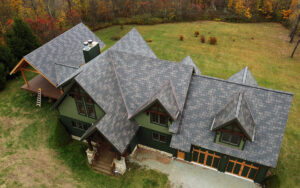In snow-prone regions, few roofing systems are as well-suited to winter conditions as metal roofs. Their sleek, hard surfaces naturally shed snowpack, and their unmatched durability often delivers a service life of 50 years or more. For homeowners and building owners alike, that combination of longevity and performance makes metal roofing a compelling investment—especially when paired with a well-designed snow management strategy.
The benefits of metal roofing are even more evident during heavy snow years, when accumulated snow can quickly turn from a scenic nuisance to a serious hazard. When large volumes of snow release suddenly from a sloped metal roof, they can damage landscaping, crush gutters, and pose real danger to pedestrians, vehicles, and property below.
That’s where snow fences—or snow retention systems—come in. These systems are the subject of another article in this issue, and rightly so: they are an essential part of keeping snow and ice where it belongs—on the roof—until it can melt off gradually. However, the addition of snow retention brings with it a lesser-known, but equally important challenge: managing the meltwater that refreezes between a snow fence and the ground.
Snow Retention Systems: A Critical First Step
Snow fences and snow bars are designed to prevent large sheets of snow and ice from sliding off metal roofs in dangerous avalanches. By holding snow in place across the upper portion of the roof, these systems reduce the risk of damage and injury below. They are especially important above walkways, entrances, driveways, and high-traffic areas.
However, snow fences don’t eliminate problematic ice—they simply hold it. On sunny days or during midwinter thaws, the retained snowpack begins to melt. The meltwater travels down the roof slope, only to encounter the coldest part of the roof: the unheated overhang near the eaves. That’s where a new problem begins to emerge—one that even the best snow fence can’t prevent.
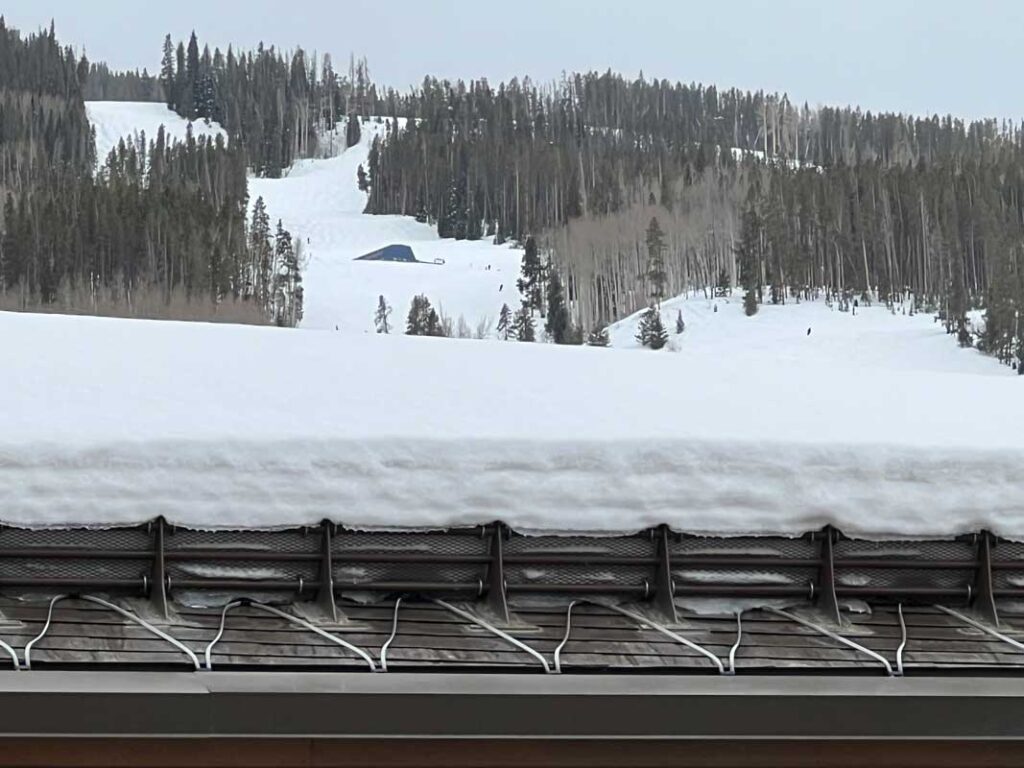
The Ice Zone: Ice Dams and Icicles Below the Snow Fence
The area between a snow fence and the roof edge becomes a prime location for ice formation. Meltwater flows beneath the snowpack until it reaches the eaves, where the roof surface is colder due to lack of insulation or attic heat below. There, it refreezes.
This cycle—melt, flow, freeze—repeats frequently in regions with fluctuating winter temperatures. Over time, it leads to the formation of ice dams: ridges of solid ice that block the natural drainage path of snowmelt. When that happens, water has nowhere to go and begins to pool behind the ice dam. On a metal roof, that water often seeks the path of least resistance—under flashings, behind panels, or into seams—eventually infiltrating the building.
Alongside ice dams, icicles commonly form at the roof edge, where dripping water refreezes in long, sharp formations. These icicles not only pose a risk to people and property below but also add significant weight to the roof edge and gutters, increasing the risk of structural damage.
Gutters and Downspouts: Essential but Vulnerable
Many buildings rely on gutter and downspout systems to direct water safely away from the foundation and walkways. In fact, gutters are often installed precisely to mitigate the risks posed by uncontrolled water runoff—especially in areas where slip-and-fall hazards must be minimized.
However, in winter, those same systems can become a liability. Gutters, exposed to frigid air and shaded by roof overhangs, often freeze solid as snowmelt refreezes inside them. Once clogged with ice, gutters can no longer perform their function. Water backs up behind the ice, leading to overflow, sagging, cracking, or complete detachment from the fascia.
Downspouts are equally vulnerable. If meltwater can’t move freely through a frozen downspout, it backs up into the gutter or onto the roof edge, exacerbating ice buildup and structural stress.
Ironically, while gutters are designed to improve water management, they can actually worsen ice damming if the system isn’t properly equipped to handle winter melt.
The Solution: Creating a Melt Path with Heat Trace Cable
The good news is that these winter roof hazards are both predictable and preventable. The key lies in maintaining a clear, continuous path for meltwater to exit the roof and drain safely to the ground. That’s where UL-listed self-regulating heat trace cable comes in.
Unlike constant-wattage cable, self-regulating heat cable adjusts its heat output based on ambient temperature. When temperatures drop, it produces more heat; when temperatures rise, it produces less. This makes it energy efficient and ideal for long-term, cold-weather operation.
Installed correctly, heat trace cable provides a controlled melt path through the very areas where ice tends to form. The most effective approach involves installing the cable in a zigzag or serpentine pattern between the snow fence and the roof edge. This pattern allows the cable to melt vertical channels through accumulating ice, ensuring meltwater has an open escape route—similar to carving drainage paths through a dam.
To visualize this, think of an ice dam as a miniature reservoir. When water collects behind it, it has nowhere to go. But if you create a breach—a hole through the dam—the water escapes. Heat cable performs exactly that function: breaching the ice and allowing meltwater to drain safely.
Gutters and Downspouts: Extending the Melt Path
The effectiveness of a melt path doesn’t stop at the roof edge. If you have gutters and downspouts, they must also be part of the system. Installing self-regulating heat trace cable inside the gutter trough ensures that water flowing off the roof doesn’t refreeze on contact. From there, the cable continues into the downspout, keeping the entire system open from roof edge to ground.
This continuity is critical. A melt path that stops at the roof edge or halfway down a downspout becomes ineffective if water encounters an ice blockage further down the line. Heat trace cable ensures a complete, uninterrupted flow path for meltwater.
Furthermore, if a structure lacks gutters altogether, icicle formation can be even more severe. In such cases, heated gutters offer a valuable buffer between the warm meltwater and the cold roof edge. The cable inside the gutter catches and controls dripping meltwater, reducing or eliminating icicle formation entirely.
Working Together: Snow Retention and Heat Cable as a Unified System
It’s important to emphasize that snow fences and heat trace cable are not competing solutions—they are complementary components of a complete winter roof management system.
Snow retention systems hold the snowpack in place. That’s their job. But by doing so, they create predictable areas of melt and refreeze. Heat trace cable addresses this secondary challenge by ensuring that meltwater generated beneath the snowpack can exit the roof without obstruction. MR


